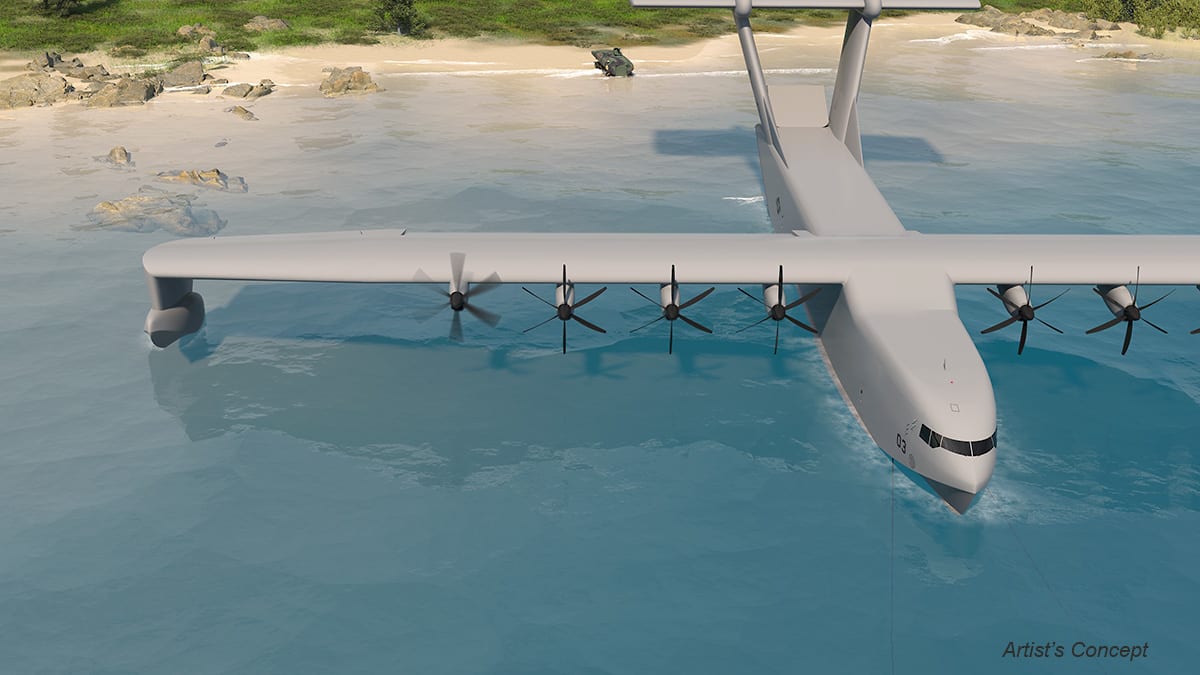DARPA's Cargo Seaplane: A Flight to the Future That Never Took Off
 The Tech Times
The Tech Times
In the ever-evolving world of defense technology, innovation is both a beacon of progress and a pathway fraught with challenges. Recently, the Defense Advanced Research Projects Agency (DARPA) made headlines by discontinuing its ambitious cargo seaplane project, known as the Liberty Lifter. Despite its potential to revolutionize military logistics, the program's termination raises questions about the future direction of advanced defense technologies.
The Liberty Lifter: A Brief Overview
The Liberty Lifter aimed to design a seaplane capable of carrying a cargo load comparable to that of the C-17 Globemaster, one of the workhorses of military air transport. What set this project apart was its ability to take off and land in rough seas, a capability that could have extended the operational reach of military logistics beyond traditional airfields.
Seaplanes have a storied history in military operations, dating back to their use in World War II for reconnaissance, patrol, and rescue missions. However, the concept of a modern, high-capacity cargo seaplane like the Liberty Lifter was unprecedented. It promised to bring a new level of flexibility and capability to military logistics, particularly in regions with limited infrastructure.
Historical Context: Lessons from the Past
The idea of utilizing seaplanes for military logistics is not new. During the early-to-mid 20th century, seaplanes were vital for maritime patrols and search-and-rescue operations. However, the advent of aircraft carriers and long-range military aircraft gradually overshadowed their utility. The Liberty Lifter represented a bold attempt to reintegrate this technology into contemporary defense strategies.
Historically, military innovation has often been a process of trial and error. The development of the jet engine, stealth technology, and drones were all met with skepticism before proving their worth. DARPA itself has been at the forefront of such groundbreaking developments, many of which were initially considered too ambitious or impractical.
The Future of Defense Innovation
While the discontinuation of the Liberty Lifter may seem like a setback, it is essential to view this in the broader context of innovation. DARPA's decision reflects a pragmatic approach to resource allocation, ensuring that funds are directed towards projects with the highest potential for success.
The technologies developed during the Liberty Lifter program could still find new life in other projects. For instance, advancements in materials science and hydrodynamic design could improve the performance of other naval or aerial platforms. Moreover, the lessons learned from this project could inform future endeavors, potentially leading to breakthroughs in unrelated fields.
Conclusion: A Flight Deferred, Not Forgotten
The termination of the Liberty Lifter program underscores the inherent risks and unpredictabilities of cutting-edge defense research. Yet, it also highlights DARPA's commitment to innovation and its willingness to explore uncharted territories, even at the risk of failure.
As DARPA pivots to new projects, the legacy of the Liberty Lifter serves as a reminder of the importance of daring to dream big. While the seaplane itself may not take to the skies, the pursuit of its vision has undoubtedly contributed to the rich tapestry of military innovation.
The path to progress is rarely linear, and every project, successful or otherwise, adds to the collective knowledge of the defense community. In this light, the Liberty Lifter's journey is not an end, but a stepping stone towards future advancements that will continue to shape the landscape of military technology.
Source: DARPA ends cargo seaplane program, eyes new uses for tech
Subscribe to my newsletter
Read articles from The Tech Times directly inside your inbox. Subscribe to the newsletter, and don't miss out.
Written by
